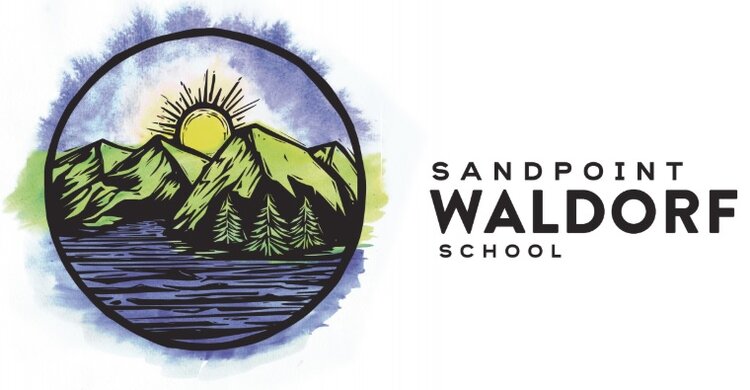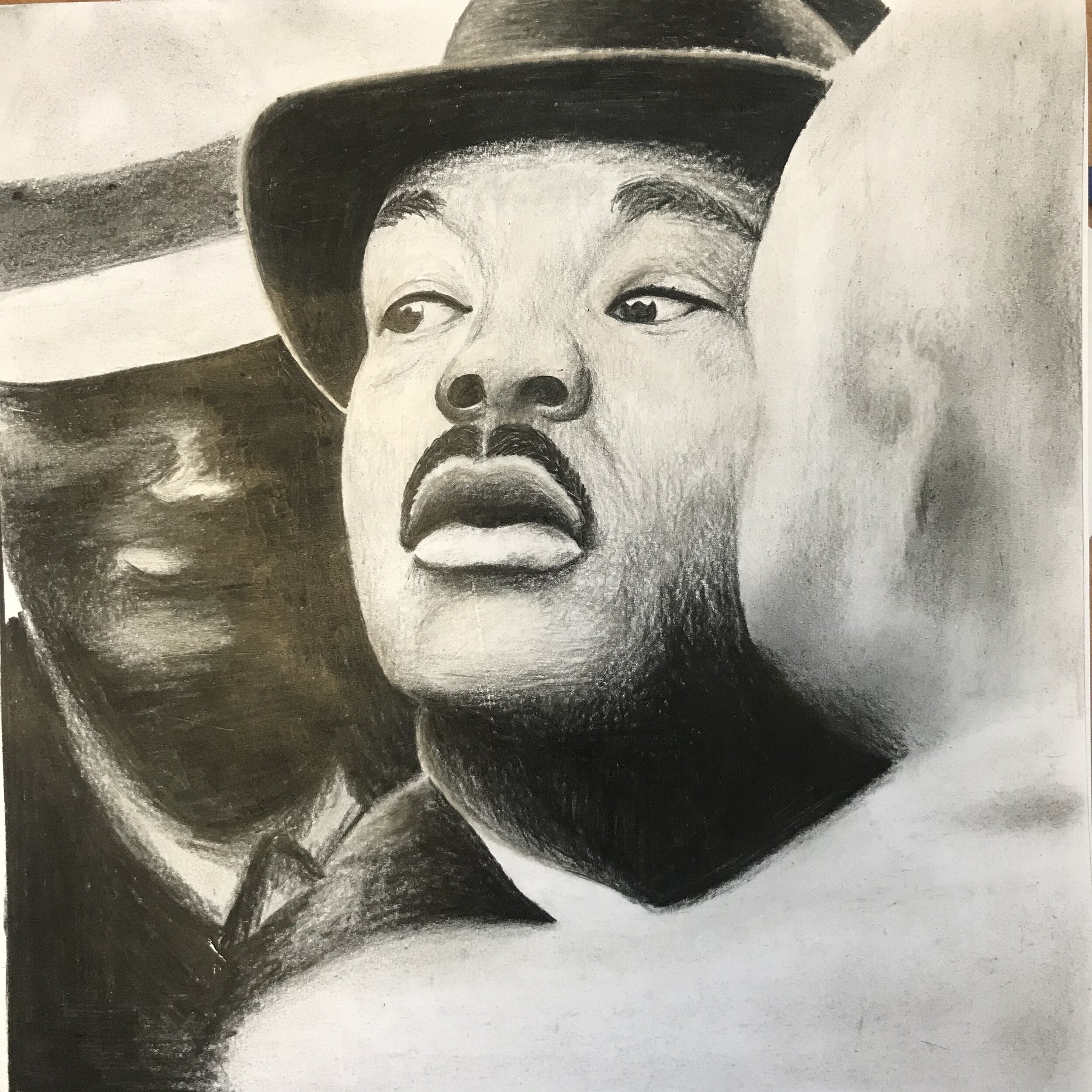The Sandpoint Waldorf School celebrates Dr. Martin Luther King, Jr.’s legacy in multiple ways, from community service to essays and presentations. We are in session on the holiday that commemorates his work, so that classes can engage in community service. The school believes that community service is the best way to honor and carry-on Martin Luther King’s commitment to helping the underserved.
Community service projects include spending time with seniors, assisting with snow removal for seniors in need, volunteering at the Bonner County Food Bank, and volunteering time at the Panhandle Animal Shelter. We value our partnership with Alpine Vista, Sandpoint Area Seniors, the Bonner County Food Bank and PAS – we are grateful that we can help support these important area organizations.
Our assembly this Friday will celebrate the life of Martin Luther King. The eighth graders researched and wrote essays about Dr. King’s life and drew his portrait over Christmas Break. At the assembly they will be presenting some of what they have learned.
The portrait above was drawn by eighth grader, Briar Williams, and below is an excerpt from an essay by eighth grader, Ada King. Both of these capture the spirit of Martin Luther King, Jr., who continues to inspire us to serve all our fellow human beings and to reach out in understanding and respect to everyone.
In 1963, Martin Luther held a protest against the segregation of restrooms/dressing rooms and discrimination in the employment process. The Birmingham police were less lenient towards the protesters and used violent means to deter the crowd. Pictures were taken of the police brutally attacking the protesters with high-pressure fire fighting hoses, batons, and dogs. When President John F. Kennedy heard of this injustice, he introduced a bill to congress called the Civil Rights Bill, which would end legal discrimination in public places. When the public heard of this, they held rallies. The biggest of them being the March On Washington. Here, Martin Luther delivered his famous ‘I Have a Dream’ speech. It inspired many and continues to do so to this day.
Throughout his years of supporting civil rights, Martin Luther was concerned about the lack of representation of the poor in politics and the lack of public services to fit their basic human needs. Thus, in 1968, King Jr. made the impuissance of the poor a focal point of his protesting by creating the Poor People's Campaign. On one of his campaigns, he traveled to Memphis to protest sanitation workers' wages. This is another rarely taught about platform of Martin Luther. Not only did he want equal rights for Black or African American people, he was quite plainly, anti-capitalist. In a speech in 1966 he stated:
We are saying that something is wrong … with capitalism…. There must be better distribution of wealth and maybe America must move toward a democratic socialism. Call it what you may, call it democracy, or call it democratic socialism, but there must be a better distribution of wealth within this country for all of God’s children.
On Apr. 4, 1968, Martin Luther was assassinated by an assassin's bullet while standing on a balcony at a Memphis hotel. As if sensing his own sudden and untimely death, the night before, Martin Luther delivered a speech at a local church saying, "I've seen the promised land. I may not get there with you. But I want you to know tonight, that we, as a people, will get to the promised land. And I'm happy tonight. I'm not worried about anything. I'm not fearing any man. Mine eyes have seen the glory of the coming of the Lord."
Racial injustice is one of America's original sins, one rooted in the very political structure of the heartland. To stand up to something so entrenched in the majority of the White American population's ideology is revolutionary and seemingly impossible, which is part of why Martin Luther lead such an inspirational life. America's racism is not merely history to remember, it still runs rampant wherever it can to this day. America must not memorialize Martin Luther's activism as something of the past, but as something that could be applied today.
Martin Luther King Jr. left a legacy in his wake. Although he did not live past forty years, he led one of the most effective and change-bringing movements in the history of America. He made an enormous difference in the way that the issue of racial discrimination is viewed in America and introduced concepts of peaceful protest to the Western world. His persuasiveness forced legislative change that challenged the way that European American and African American people interacted. Martin Luther inspired many to stand up for their rights and continues to do so today.
We hope you will join us on Friday at assembly, and if you want to assist with any of the community service projects please contact your teacher or me.
Submitted by Julie McCallan & Ada King, Grade 8 student




